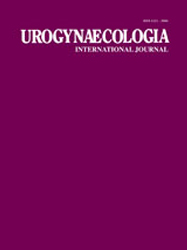Urinary incontinence and lower urinary tract symptoms among pregnant women and their affecting factors

All claims expressed in this article are solely those of the authors and do not necessarily represent those of their affiliated organizations, or those of the publisher, the editors and the reviewers. Any product that may be evaluated in this article or claim that may be made by its manufacturer is not guaranteed or endorsed by the publisher.
Authors
Pregnancy and childbirth are the main risk factors for pelvic floor dysfunction. The main manifestations of this disorder are lower urinary tract symptoms (LUTS) and urinary incontinence (UI). Studies on the prevalence and risk factors of these conditions are essential for early diagnosis and comprehensive management. However, until now, there has been no comprehensive study of the prevalence and risk factors for pregnant women in Jakarta. Therefore, this observational cross-sectional analytic study was carried out to determine the prevalence of UI and LUTS and the factors that influence them. The subjects (n=236) of this study were pregnant women who came for routine check-ups at the Jakarta area Health Center from April 2021 to March 2022. Patients with a history of incontinence, multiple pregnancies, uncontrolled diabetes, neurological disorders, or a history of previous surgery were excluded from the study. The risk factors assessed were maternal age, gestational age, parity, body mass index, and previous obstetric history. We found that 8.5% had stress UI, 14% had urgency UI, and 1.6% had mixed UI. Urinary complaints were found in the form of frequency (59.3%), nocturia (87.3%), urgency (33.1%), hesitancy (8.9%), and straining (0.8%). There were only 5.1% of subjects who did not have any urinary complaints. The risk factors for LUTS and UI were advanced maternal age and trimester of pregnancy.
How to Cite

This work is licensed under a Creative Commons Attribution-NonCommercial 4.0 International License.
PAGEPress has chosen to apply the Creative Commons Attribution NonCommercial 4.0 International License (CC BY-NC 4.0) to all manuscripts to be published.






